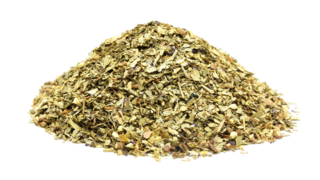
Synthetic marijuana has played a role in multiple accidents and crimes in the past several weeks: a woman is accused of stabbing her boyfriend while high on the drug, and a D.C. homeless shelter experienced multiple overdoses. Mayor Muriel Bowser has said she wants to crack down on all synthetic drugs.
But what is synthetic marijuana made from?
The drug, which goes by many nicknames including bizarro, spice and train wreck, typically consists of dried, shredded plant material and chemical additives that have psychoactive effects.
According to the NIH’s National Institute of Drug Abuse (NIDA), synthetic marijuana is often labeled “not for human consumption.”
Some synthetic marijuana users report effects similar to those of psychotic drugs, including anxiety, paranoia and hallucinations. Because synthetic marijuana attaches more strongly to cell receptors in the brain than regular marijuana, it can produce more powerful and unpredictable effects, NIDA says.
Synthetic marijuana abusers report rapid heart rate, vomiting, agitation, confusion and hallucinations.
The American Association of Poison Control Centers said synthetic marijuana is marketed as a legal high but is created specifically to be abused. They reported that in the first six months of 2015, poison centers received 4,109 reports of exposure to synthetic marijuana. In only six months of 2015, the number of reports increased by nearly 500 from 2014.
The Drug Enforcement Administration (DEA) has classified the five most commonly used chemicals in synthetic marijuana as Schedule I controlled substances. This means they are illegal to sell, buy or possess. The chemicals carry a high potential for abuse and bring no medical benefit to users.
In an effort to skirt the rules, many synthetic marijuana producers change or substitute the chemicals to narrowly fit into the law. The DEA monitors commonly used chemicals and tries to keep the list of banned ingredients up to date.
The NIH said synthetic marijuana is very popular among young and high school-aged drug users. It was second in use only to regular marijuana among high school seniors in 2012.
NIH experts suggest synthetic marijuana is also popular because its chemical components are not easily detected in standard drug tests.
NEWS Channel 4 • Washington DC
http://www.nbcwashington.com/news/health/What-Is-Synthetic-Marijuana-and-Why-Is-It-Gaining-Popularity-309831481.html



